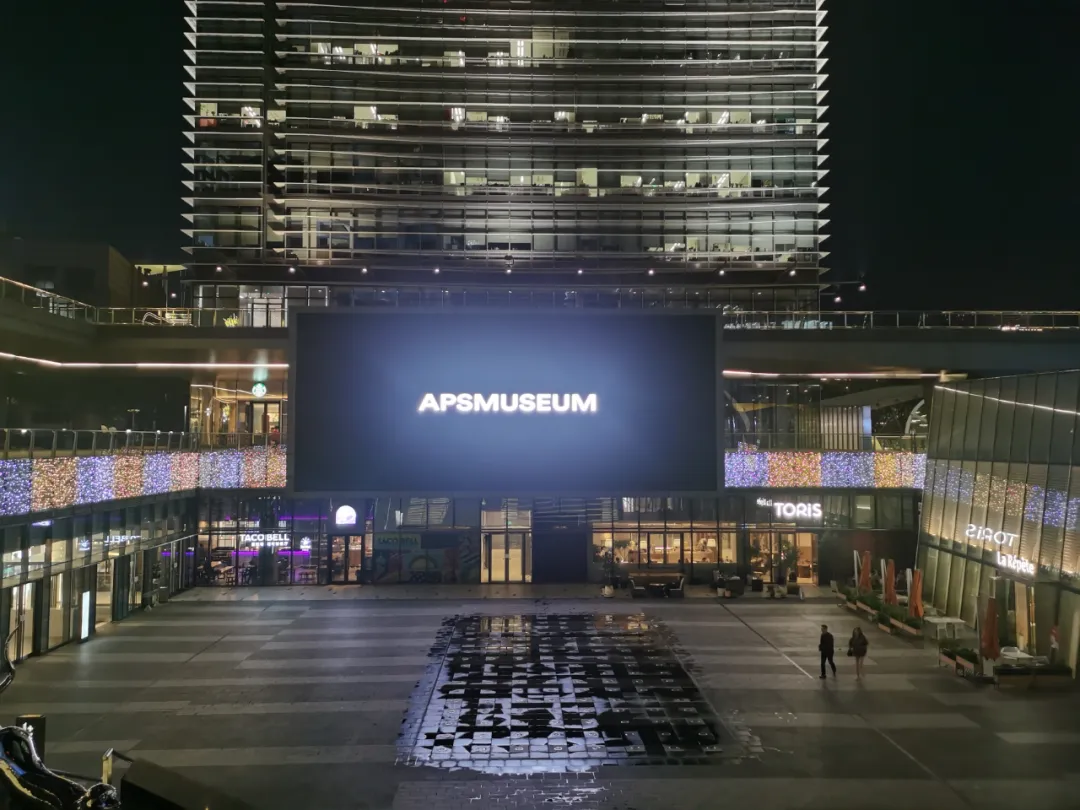

Located in Lujiazui Financial City's L+MALL, APSMUSEUM is dedicated to creating a unique exhibition space, opening up the vibrant shopping center through artistic intervention. Lujiazui Center L+MALL is a key component of Lujiazui Financial Plaza, a large-scale urban complex in the heart of Lujiazui, located in the prime CBD. Here, APSMUSEUM, as a physical venue, integrates high-quality art resources into Lujiazui's commercial landscape, permeating the urban fabric and nourishing a better life through open programs such as exhibitions, international exchanges, public education, and publishing.
On October 29, 2023, the Art Within Reach exhibition series grandly opened at APSMUSEUM. Co-organized by Xin Zhifeng Art Institute and Lujiazui Center L+MALL, the exhibition is produced by Wang Bin and curated by renowned scholar Professor Xu Zidong. As one of Shanghai's first "New Art Spaces," APSMUSEUM is committed to deepening its commitment to contemporary art. This year, APSMUSEUM has launched the theme of "Art Within Reach," envisioning to further integrate contemporary art into modern Chinese daily life.

A Living Environment, a Growing City
The inaugural exhibition, “Ensemble Urbain,” unveiled on November 11, 2020, set the tone for APSMUSEUM’s mission. The city, it suggested, is not a static text but a living manuscript, constantly reinterpreted and rewritten. To reread is to reexamine and reflect; to rewrite is to introduce new forms and languages, embodying a spirit of perpetual exploration and renewal. APSMUSEUM was conceived to bring this ideal to life.
Gao Weigang’s Door marks the virtual boundary between “inside” and “outside,” expressing both a longing for everything beyond the door and an appreciation for the world within. Everyday objects are transformed into a visible yet non-functional three-dimensional space. Meanwhile, Alec’s Armchair, Bordo’s Coffee Table, Jiu Society’s Tea Table, and three 3D lenticular works by Mary Ann Strandell hanging on the walls together create the scene of a living room. In this way, symbols approach the physical objects to an almost infinite degree, subverting conventional definitions of art.


Art with Warmth, a City That Is Not Lonely
The lightness and heaviness of our times, the present and the past, the material and the virtual, ruins and life—how can art more deeply engage with our realities, as well as our spiritual needs and spiritual havens in this era?
Olafur Eliasson's Affection features pale green glass infused with moraine powder from the retreat of Greenland's glaciers. When the internal light shines through the glass, it invites the viewer into a warm "bedroom" where light and shadow flow.
Japanese artist Miya Ando uses aluminum composite material as a canvas, painting with white ink. The subtle texture blends with the lightness of light, creating a beautiful window scene of moonlight filtering through a misty window. Wu Guande, on the other hand, uses found objects like branches, stones, and seeds in lieu of a brush, creating images of peace, vastness, tranquility, and poetry.


From Crossing Boundaries to a Boundless City: Returning to Everyday Life
The cross-disciplinary integration of architecture, design, art, and even literature is more than a simple patchwork. Ultimately, it must return to the heart of the soul, because urban spaces need more than steel and concrete, but rather spaces where the soul can breathe, and art provides this warmth.
Art doesn't necessarily need to be seen in an exhibition hall. Among the exhibits in "Art Within Reach," a pot of lilies on a chair, its daily sunlight, a concrete cactus "ornament," two ceramic hammers, two suitcases, and so on—these are all masterpieces by contemporary artists from China and abroad. They don't tell grand narratives, but quietly integrate into our daily lives. They don't dazzle like the sun, but they participate in our family ethics minute by minute.

This kind of art in the everyday world profoundly challenges the delicate boundary between artwork and real life. From a contemporary perspective, this represents a postmodern trend of flat, rambling, and subversive modernist norms of high art. From a Chinese social context, this also represents a shift from grand narratives to the ideological context of everyday life. Art within reach, while requiring no language, allows for a direct encounter with thought and beauty.



APSMUSEUM is still in its infancy, with much to explore and achieve. The journey ahead involves forging collaborations with exceptional artists, designers, and architects worldwide, while fostering greater interaction between the public and these creative minds. Here, international interdisciplinary dialogues will continue to unfold, guided by a forward-looking vision. Like the blue passage that connects two spaces, APSMUSEUM serves as a bridge—a conduit between realms, and that is its enduring responsibility.